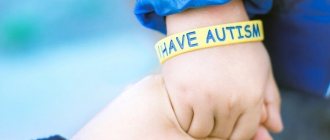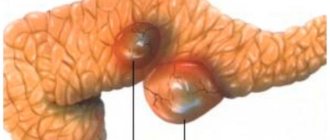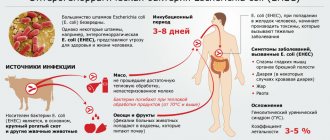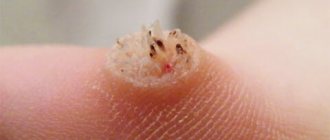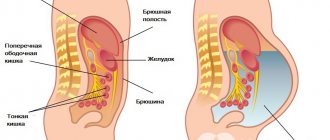Cerebral palsy is a group of diseases in which motor functions and posture are impaired. This is due to a brain injury or a disorder of brain formation. This disease is one of the most common causes of permanent disability in children. Cerebral palsy occurs in approximately 2 cases per thousand people.
Cerebral palsy causes reflex movements that a person cannot control and tightness of the muscle, which can affect part or all of the body. These disorders can range from moderate to severe. There may also be intellectual disability, seizures, visual and hearing impairment.
Accepting the diagnosis of cerebral palsy can sometimes be a difficult task for parents.
How is cerebral palsy formed?
Movement disorders occur when there are two types of brain damage:
- Changes in nerve cells of an initially normal brain
- Primary disorder of brain structure
When nerve cells are exposed to a damaging factor, a wide variety of defects occur. The reason is the special vulnerability of those brain structures that are intensively developing at this particular moment. Therefore, some children with cerebral palsy have more impaired movements of their arms, others have more impaired movements of their legs, and others have more impaired coordination.
The high incidence of cerebral palsy in children born primarily before 33 weeks is explained by an immature brain and imperfect arteries. In healthy full-term babies, even with the slightest lack of oxygen, the blood is distributed so that the brain is not damaged. In low birth weight children, especially those on mechanical ventilation, there is no such mechanism. Therefore, during hypoxia, some parts of the brain die, leaving cavities in their place.
Reasons for the development of cerebral palsy
- According to statistics, the majority of children with cerebral palsy were born on time, during normal labor, and the disorders occurred during pregnancy.
- Only 10% of sick children had asphyxia during childbirth or birth trauma
- In parallel with movement disorders, children with cerebral palsy often suffer from hearing impairment, visual impairment, speech defects and mental disorders.
Factors during pregnancy
- Fetoplacental insufficiency leading to chronic oxygen starvation of the fetus
- Infection of the fetal nervous system (for example, rubella virus)
- Severe Rh conflict between mother and fetus
- Chromosomal mutations and hereditary diseases of the fetus
Factors influencing the child during childbirth
- Fetal asphyxia (complete lack of oxygen due to entanglement of the umbilical cord, placental abruption, prolonged compression of the umbilical cord by the pelvic bones)
- Trauma during childbirth (with rapid labor, abnormal fetal position, narrow maternal pelvis)
Factors that arose after the birth of the child
- Head injuries
- Infections (both those transmitted at the time of birth and those acquired in the first days of life)
- Poisoning with drugs and toxic substances
Prevention
The cause of cerebral palsy (CP) is sometimes unknown. But certain risk factors have been identified and their relationship with the incidence of cerebral palsy has been proven. Some of these risk factors can be avoided. Following certain conditions during pregnancy can help reduce the risk of brain damage to the fetus. These recommendations include:
- Complete nutrition.
- No smoking.
- Do not come into contact with toxic substances
- Regularly see your doctor.
Recommendations after the birth of the child:
- Minimize injury from accidents
- Determine neonatal jaundice
- Do not use substances containing heavy metals (lead)
- Isolate the child from patients with infectious diseases (especially meningitis)
- Immunize the child in a timely manner.
Types of cerebral palsy
Due to the variety of manifestations of cerebral palsy, there are many different classifications. The main principle for dividing symptoms is the degree of damage and the number of limbs in which movement is difficult:
| Syndrome | Changes in the brain | Common reasons |
| Spastic diplegia |
|
|
| Spastic tetraplegia |
|
|
| Hemiplegia | More often – cerebral hemorrhage |
|
| Extrapyramidal form | Damage to a specific area of the brain (basal) |
|
Spastic diplegia
This is a bilateral dysfunction of the limbs of the same name, more often the legs. The hands completely or almost completely retain their functions. This form of paralysis is the most common.
Although minor disturbances can be noticed already in a newborn, the most striking manifestations begin with the period of crawling of the child.
- When crawling, the child moves his arms evenly, but pulls up his legs. In severe cases, crawling is difficult
- In the lower extremities, tone is increased, tendon reflexes are strengthened (detected at an appointment with a neurologist)
- With support under the armpits, crossing the limbs is possible
- The onset of walking is delayed, the child walks on tiptoes
- In severe cases – growth retardation of the lower extremities
In most cases, intelligence is preserved; speech may be slightly impaired. Convulsive syndrome occurs less frequently than with other types of cerebral palsy. In mild cases, children are able to take care of themselves and learn new skills.
Spastic tetraplegia
This is paralysis of four limbs - the most severe and poorly corrected form of cerebral palsy. It occurs as a result of extensive brain damage and is often accompanied by mental retardation and epileptic seizures.
- From birth, children may have difficulty swallowing
- Tone is increased in all four limbs, often more so on one side
- Crawling, walking and other skills are impossible or difficult
- Often – epilepsy, speech impairment, intellect, vision
- Frequent combination with microcephaly (reduced head size) and other developmental defects
The prognosis for the child’s mental development is also unfavorable: most have moderate or severe mental retardation.
Hemiplegia
This is a dysfunction of the arms and legs of the same name, most often on the right. The hand suffers more. At birth, all reflexes are preserved, but as the child develops, a decrease in hand function on the affected side becomes noticeable.
- The tone in the hand is high, it can be bent in all joints and pressed to the body
- balance and sitting and standing postures are formed almost on time
- intelligence most often does not suffer
- convulsions may occur
Extrapyramidal (hyperkinetic) form
This is a special type of cerebral palsy. The defeat occurs due to incompatibility between the blood of mother and fetus or due to severe prematurity.
- tone is often reduced
- children have trouble holding their head up
- later episodes of hypertonicity and violent movements occur
- independent walking becomes possible after 4-6 years
- Swallowing, pronunciation of words and sounds may be impaired
- intelligence remains intact in most cases
Violent movements with cerebral palsy are of the following types:
- Choreiform movements - sudden, rapid movements of the hips and shoulders
- Athetoid movements - worm-like, slow, twisting movements of the hands and feet
- Mixed form - athetosis and chorea at the same time
All violent movements intensify during stress and emotional reactions, decrease in a calm state and completely disappear during sleep.
Severity of cerebral palsy
All of the above symptoms of cerebral palsy can manifest themselves to varying degrees. The severity most often depends on the size of the brain lesion. The time when physical therapy and speech correction classes begin plays a big role.
- Mild degree. The child can move without assistance, perform household tasks, attend regular school and master most professions.
- Average degree. The child needs help from outsiders, but socialization is possible.
- Severe degree. The child is absolutely dependent on others and is unable to take care of himself.
Does the disease have degrees?
Remember that the extent of the disease depends on how much the brain is affected. The development of the disease is also influenced by how quickly the parents contacted a specialist, underwent diagnosis and treatment, and what corrective measures they took with their baby.
Cerebral palsy happens:
- Light. With it, the baby can independently make any movements, carry out household errands, attend an educational institution, and master a profession.
- Average The baby cannot do anything without the help of strangers, but he can adapt socially.
- Heavy. The child cannot do anything without strangers, he cannot even take care of himself.
Diagnosis of cerebral palsy
For the prognosis of the disease, the principle is important: the earlier the diagnosis is made, the more effective the treatment will be. Therefore, it is very important to examine the child in the maternity hospital. Children from risk groups need to be especially carefully monitored:
- premature babies
- light weight
- with congenital malformations (even minor ones)
- contracted an infectious disease from the mother during pregnancy
- children whose birth was accompanied by the use of obstetric forceps, a vacuum extractor and other devices
- are on artificial ventilation for one reason or another
- children who received a low Apgar score (from 0 to 5 points)
- children with severe neonatal jaundice
When examining a newborn, the doctor checks all reflexes and muscle tone. If brain damage is suspected, special methods are required:
- Ultrasound of the brain (has diagnostic value only in combination with the child’s complaints and symptoms)
- EEG (electroencephalography) – when seizures occur
- CT and MRI if necessary. These methods can detect hydrocephalus, cysts, hemorrhages or tumors in the brain.
As a result, the doctor can make a diagnosis: encephalopathy, that is, brain pathology. This is precisely the prerequisite for the development of cerebral palsy. But, unfortunately, the term encephalopathy is very often used unreasonably. We must not forget that children in the first 6 months of life may experience increased excitability, slight tremor of the chin and arms, and increased tone of the limbs. All this is an individual feature, does not require treatment and goes away once the baby begins to crawl and walk. Therefore, it is important to find a qualified pediatrician who can distinguish physiological muscle tone from the first signs of cerebral palsy.
What kind of disease is this
Cerebral palsy is not a disease, but a series of symptoms that appear for several reasons. The similarity of the symptoms is that they all affect the brain and disrupt the patient’s motor activity. Most often, the disease affects children in the first year of life at a time when the brain is in an active stage of development. If a baby or teenager receives a head injury, his motor activity will also decrease, but this cannot be called a disease.
Another feature of cerebral palsy is that the symptoms of this disease do not worsen over time, but remain the same. Moreover, reduced motor activity can be restored. But remember that if such children are not properly cared for and dealt with, this can lead to dangerous consequences.
Differential diagnosis
| Course of pregnancy and childbirth | Condition of the newborn | First months of life | Diagnostics | |
| cerebral palsy |
|
|
| Examination by a neurologist. Ultrasound, EEG, CT, MRI. |
| Phenylketonuria and other diseases of amino acid metabolism | Often – without features | Often - without any features. Sometimes – symptoms similar to cerebral palsy | Often - without any features. Sometimes – symptoms similar to cerebral palsy | Biochemical tests |
| Mucopolysaccharidosis | Often – without features | Characteristic features: large skull, overhanging forehead, sunken bridge of the nose, large tongue, deformation of the chest and spine. Short fingers, big belly | Decreased muscle tone | Special analysis of urine and blood for enzymes |
| Neurofibromatosis | Often – without features | Often – without features | Decreased muscle tone. | Characteristic external signs |
| Spinal amyotrophy of Werdnig-Hoffmann | Often – without features | Severe hypotonicity with a characteristic relaxed posture in the congenital form. Without features - in early form | Severe muscle hypotonicity in the congenital form. | Electromyography |
| Hypothyroidism (low thyroid function) | Often – dysfunction of the thyroid gland in the mother | Large body weight, swelling of the legs, severe hypotonicity | Drowsiness, tendency to constipation, lethargy | Hormonal status study |
continuation of the table - FURTHER DEVELOPMENT OF THE CHILD
| Movement disorders | Intelligence, speech | Additional syndromes | Opportunity to acquire new skills | |
| cerebral palsy |
| Reduced intelligence of varying degrees or normal. Speech is often difficult or impossible. |
| In many cases, skills are formed, although with a large lag. |
| Phenylketonuria and other diseases of amino acid metabolism | Increased tendon reflexes. | Appears towards the end of the first year of life. Lethargy. Speech disorder. |
| Increasing deficits of all functions, loss of acquired skills |
| Mucopolysaccharidosis | Hypotonicity of muscles. | Decrease in intelligence of varying degrees. |
| Sharply reduced |
| Neurofibromatosis | Hypotonicity of muscles. | Slowing of psychomotor development. Intelligence is often not affected. | Tumor-like formations on the skin, spinal cord and brain. Cafe-au-lait spots on the skin. | Saved |
| Spinal amyotrophy of Werdnig-Hoffmann |
| In the early form, it does not suffer or is slightly reduced. | — | Most often – deterioration of the condition and loss of skills up to immobility. |
| Hypothyroidism (low thyroid function) | Hypotonicity of muscles | Without treatment, children's intelligence is reduced to varying degrees. | The characteristic appearance of a child: small stature, large belly, dull hair, wide bridge of the nose, narrow eyes, half-open mouth, dry skin. | Persistent with timely treatment |
At what age is cerebral palsy diagnosed?
Although cerebral palsy is often present from the first days, symptoms of the disease can be difficult to notice in newborns. The child's movements are limited, and he spends most of the day sleeping. Only the most severe forms of the disease can be detected at such an early stage.
At the age of 3-4 months, healthy children lose some of their childhood reflexes, which gives them the opportunity to develop and acquire new skills. In children with cerebral palsy, these reflexes persist, preventing further motor development. At this stage, the risk of developing the disease can be assumed with greater probability.
- The child is often lethargic, does not swallow, does not suck, and has no spontaneous movements.
- at 3-4 months in healthy children reflexes disappear:
- Moro - spreading of the arms when raising and sharply lowering the body down
- Reflex walking - with the support of the child in a vertical, slightly inclined position, he moves his legs.
Crawling - the child tries to crawl while supporting his heels with his hand
All these reflexes are childish. at an older age, they interfere with the acquisition of new skills, which is what happens with cerebral palsy.
Parents should be alert if after 4-6 months the baby is very excitable or lethargic, does not meet the deadlines for acquiring skills, sits and stands asymmetrically, sparing half the body or legs. At the age of one year, parents may notice involuntary movements in the child.
More information about what skills a baby should develop in each month and whether the child’s development meets the norms can be found in the “Diary of Child Development from Birth to Three Years,” A.M. Kazmin, L.V. Kazmina, 2001. This is a very clear and detailed list of skills at a certain age, it indicates the latest dates for their appearance; if the skills are delayed, this may be a sign of developmental delay, including signs of cerebral palsy.
With cerebral palsy, symptoms appear before the age of one year in almost 100% of cases. Companions with cerebral palsy may also join this age group.
Complications and life expectancy of children with cerebral palsy
How long children with cerebral palsy live depends directly on the care they receive. With insufficiently good care, lack of treatment or rehabilitation courses, undesirable companions of cerebral palsy may develop or progress, aggravating the clinical picture and prognosis for the development and even life of the child:
- Epilepsy. With decompensation of this disease, brain damage intensifies after each convulsive attack that occurs, which leads to a deterioration in the child’s condition and practically negates all possibilities for restoring the functions of the nervous system. Epilepsy is also dangerous because it can lead to the development of status epilepticus, which causes impaired consciousness up to coma and can cause the death of a child.
- Severe joint contractures.
With constant spasm of skeletal muscles and lack of activities with the child, a persistent, almost impossible to correct, deformity of the limb is formed. An arm or leg “freezes” in one position, which further worsens the condition of non-working muscles. The functionality of the limb is almost impossible to restore once contracture develops. - Bedsores can appear in severe cerebral palsy in adults and children with poor care, if the patient hardly moves and there are dysfunctions of the pelvic organs.
- Ascending urinary tract infections also develop in the absence of proper care for a sick child. The progression of infectious complications often leads to secondary inflammation of other organs and systems and even to sepsis and multiple organ failure, which is life-threatening.
Companions of Cerebral Palsy
- convulsions
Special support suit SPIRAL - hydrocephalus (water on the brain)
- visual impairment
- hearing impairment
- coordination and balance disorder
- delayed speech development Alalia (lack of speech)
- Dysarthria (difficulty pronouncing sounds)
- Dyslexia (written language disorder)
- Stuttering
- defects in the emotional-volitional sphere
- difficulties writing, reading, counting
Complications
Despite the fact that lesions in the brain do not grow with age, the condition of a sick child may worsen due to the formation of incorrect postures and methods of movement. Lack of communication with peers and pedagogical neglect can lead to worsening speech and emotional disorders:
- musculoskeletal disorder
Contractures (sustained flexion of arms and legs due to prolonged high tone). - Contractures can be so severe that they lead to joint dislocation
- Deformity of the “horse foot” type, when the child walks exclusively on his toes
- Curvature of the spine, chest, pelvic distortion due to prolonged incorrect posture when walking and sitting
- speech disorder
- psychological problems due to social isolation
Treatment of cerebral palsy
It is not possible to completely cure cerebral palsy. But with timely measures and the right attitude of parents and teachers, the child is able to achieve great success in self-care and acquisition of skills.
Treatment objectives:
- Encourage the child to develop self-care skills, movement and proper movements of the whole body.
- Prevent the appearance of incorrect postures, contractures and curvature of the spine.
- Create conditions for the full development of speech and the formation of psycho-emotional activity.
The treatment of children with cerebral palsy is determined by a specialist, since many factors must be taken into account: the form of cerebral palsy, its severity, the preservation of other skills, the level of intellectual development, the child’s age and concomitant diseases.
Symptoms
Even when the condition is present at birth, symptoms of cerebral palsy (CP) may not be noticed until the child is between 1 and 3 years of age. This happens due to the growth characteristics of the child. Neither doctors nor parents may pay attention to disturbances in the child’s motor sphere until these disturbances become obvious. Children may retain newborn reflex movements without age-appropriate development of movement skills. And sometimes the first to pay attention to a child’s underdevelopment are nannies. If cerebral palsy is severe, then the symptoms of this disease are already detected in the newborn. But the appearance of symptoms depends on the type of cerebral palsy.
The most common symptoms of severe cerebral palsy are
- Swallowing and sucking problems
- Faint scream
- Cramps.
- Unusual child poses. The body can be very relaxed or very strong hyperextension with arms and legs spread out. These positions are significantly different from those that occur with colic in newborns.
Some problems associated with cerebral palsy become more obvious over time or develop as the child grows. These may include:
- Muscle wasting in injured arms or legs. Problems in the nervous system impair movement in the injured arms and legs, and muscle inactivity affects muscle growth.
- Pathological sensations and perceptions. Some patients with cerebral palsy are very sensitive to pain. Even normal everyday activities such as brushing your teeth can be painful. Pathological sensations may also affect the ability to identify objects by touch (for example, distinguish a soft ball from a hard one).
- Skin irritation. Drooling, which is common, can lead to irritation of the skin around the mouth, chin and chest.
- Dental problems. Children who have difficulty brushing their teeth are at risk for gum disease and tooth decay. Medicines used to prevent seizures may also contribute to the development of gum disease.
- Accidents. Falls and other accidents are risks associated with impaired coordination of movements, as well as in the presence of convulsive attacks.
- Infections and somatic diseases. Adults with cerebral palsy are at high risk of heart and lung diseases. For example, in severe cases of cerebral palsy, problems arise with swallowing and when choking, some of the food enters the trachea, which contributes to lung diseases (pneumonia).
All patients with cerebral palsy (cerebral palsy) have certain problems with body movement and posture, but many babies do not show signs of cerebral palsy at birth and sometimes only nannies or caregivers are the first to pay attention to deviations in the child’s movements that contradict age criteria. Signs of cerebral palsy may become more obvious as the child grows. Some developing disorders may not become apparent until after the child's first year. The brain injury that causes cerebral palsy does not appear for a long time, but the effects may appear, change, or become more severe as the child gets older.
The specific effects of cerebral palsy depend on its type and severity, level of mental development and the presence of other complications and diseases.
- The type of cerebral palsy determines the child's motor impairment.
Most patients with cerebral palsy have spastic cerebral palsy. Its presence can affect both all parts of the body and individual parts. For example, a child with spastic cerebral palsy may have symptoms primarily in one leg or one side of the body. Most children usually try to adapt to impaired motor functions. Some patients can even live independently and work, requiring only occasional assistance from others. In cases where there are impairments in both legs, patients require a wheelchair or other devices that compensate for motor functions.
Complete cerebral palsy causes the most severe problems. Severe spastic cerebral palsy and choreoathetoid cerebral palsy are types of complete paralysis. Many of these patients are unable to care for themselves due to both motor and intellectual impairments and require constant care. Complications such as seizures and other long-term physical consequences of cerebral palsy are difficult to predict until the child is 1 to 3 years old. But sometimes such predictions are not possible until the child reaches school age, and in the process of studying, communicative intellectual and other abilities can be analyzed
- The severity of mental impairment, if any, is a strong predictor of daily functioning. Slightly more than half of patients who have cerebral palsy have some degree of intellectual disability. Children with spastic quadriplegia usually have severe cognitive impairment.
- Other conditions, such as hearing impairments or problems, often occur with cerebral palsy. Sometimes these disorders are noted immediately; in other cases they are not detected until the child gets older.
In addition, just like people with normal physical development, people with cerebral palsy experience social and emotional problems throughout their lives. Since their physical defects exacerbate problems, patients with cerebral palsy need the attention and understanding of other people.
Most patients with cerebral palsy survive to adulthood, but their life expectancy is somewhat shorter. Much depends on how severe the form of cerebral palsy is and the presence of complications. Some patients with cerebral palsy even have the opportunity to work, especially with the development of computer technology, such opportunities have increased significantly.
Cerebral palsy is classified according to the type of body movement and posture problem.
Spastic (pyramidal) cerebral palsy
Spastic cerebral palsy is the most common type. A patient with spastic cerebral palsy develops stiff muscles in some parts of the body that are unable to relax. Contractures occur in damaged joints, and the range of movements in them is sharply limited. In addition, patients with spastic cerebral palsy have problems with coordination of movements, speech disorders and disturbances in swallowing processes.
There are four types of spastic cerebral palsy, grouped according to how many limbs are involved. Hemiplegia - one arm and one leg on one side of the body or both legs (diplegia or paraplegia). They are the most common types of spastic cerebral palsy.
- Monoplegia: Only one arm or leg is impaired.
- Quadriplegia: Both arms and both legs are involved. Usually in such cases there is damage to the brain stem and, accordingly, this is manifested by swallowing disorders. In newborns with quadriplegia, there may be disturbances in sucking, swallowing, weak crying, and the body may be weak or, on the contrary, tense. Often, upon contact with a child, hypertonicity of the torso appears. The child may sleep a lot and not show interest in his surroundings.
- Triplegia: Either both arms and one leg or both legs and one arm are caused.
Non-spastic (extrapyramidal) cerebral palsy
Non-spastic forms of cerebral palsy include dyskinetic cerebral palsy (divided into athetoid and dystonic forms) and ataxic cerebral palsy.
- Dyskinetic cerebral palsy is associated with muscle tone that ranges from moderate to severe. In some cases, there are uncontrollable jerks or involuntary slow movements. These movements most often involve the muscles of the face and neck, arms, legs, and sometimes the lower back. The athetoid type (hyperkinetic) type of cerebral palsy is characterized by relaxed muscles during sleep with minor twitching and grimacing. If the muscles of the face and mouth are involved, there may be disturbances in the process of eating, drooling, choking on food (water) and the appearance of inappropriate facial expressions.
- Ataxic cerebral palsy is the rarest type of cerebral palsy and affects the entire body. Pathological movements occur in the torso, arms and legs.
Ataxic cerebral palsy is manifested by the following problems:
- Body imbalance
- Impaired precise movements. For example, the patient cannot reach the desired object with his hand or perform even simple movements (for example, bringing a cup directly to the mouth). Often only one hand is able to reach the object; the other hand may shake as it tries to move the object. The patient is often unable to button clothes, write, or use scissors.
- Coordination of movements. A person with ataxic cerebral palsy may walk with too long steps or with their feet spread wide apart.
- Mixed cerebral palsy
- Some children have symptoms of more than one type of cerebral palsy. For example, spastic legs (symptoms of spastic cerebral palsy related to diplegia) and problems with facial muscle control (symptoms of dyskinetic CP).
- Total body cerebral palsy affects the entire body to varying degrees. Complications from cerebral palsy and other health problems are most likely to develop when the entire body is involved rather than isolated parts.
Treatment methods for cerebral palsy
Medication
The main drugs for cerebral palsy are:
- anticonvulsant medications (for seizures), prescribed by an epileptologist under strict dosage control.
- for severe painful muscle spasms - relaxing drugs: diazepam, baclofen (also prescribed according to strict indications)
Of all the other medications prescribed for cerebral palsy, most are dummies. It is important to remember that dead lesions in the brain cannot be restored by anything. Therefore, you should not take nootropics, a bunch of vitamins and drugs that supposedly improve blood supply to the brain. Drugs with unproven effectiveness and safety:
- supposedly “vascular” drugs (Cavinton, cinnarizine)
- Actovegin, Cortexin, Cerebrolysin (prescribed widely, not only to children with cerebral palsy)
- “nootropic” drugs (piracetam, pantogam, phenibut)
- homeopathic remedies
Massage and physical therapy
A very important stage of treatment, carried out throughout the child’s life. If a healthy baby only needs a gentle massage with his mother’s hands, then with cerebral palsy, the help of a specialist is needed at first. He will help you choose exercises and massages for the right muscle groups. Improper massage and exercise can aggravate the child's condition.
Correction of incorrect postures
Children with cerebral palsy may develop abnormal postures due to unbalanced muscle tone. In the future, this will slow down their development and lead to contractures and irreversible consequences. Correction of such poses is carried out using special devices: splints, splints, rollers, shields, bandages, verticalizers.
Surgical correction of formed contractures and curvatures
- Achilles tendon surgery
- interventions on the muscles of the lumbar region (to reduce spasm)
Other methods
- Physiotherapy aimed at relieving painful muscle spasms
- Correction of speech disorders (individual and group sessions with a speech therapist)
- Removing social isolation is an extremely important point, without which success in treatment cannot be high.
- Hippo- and dolphin therapy. Communication with animals allows children to improve speech, coordination and adapt to life in society (see hippotherapy).
Parents of special needs children with cerebral palsy must understand the main principle: training and treatment will be lifelong. Cerebral palsy is a multisymptom disease. Therefore, a neurologist, physiotherapist, physical therapy doctor, surgeon, speech therapist and psychologist take part in the treatment. In most large cities of the country there are centers for the treatment of cerebral palsy, where everything necessary for successful rehabilitation is available. Thanks to specialists and family, a sick child can acquire many skills, acquire a profession, socialize and feel like an equal member of society. Clinics and sanatoriums accept patients on both general and commercial terms.
The birth of children with cerebral palsy is always a big shock for parents. Learning to live with this and love your baby no matter what sometimes takes time. Therefore, it is recommended to use the help of a psychologist to solve family problems, accept the situation and find harmony with yourself and the baby.
Dynamic orthosis
This type of orthosis is used when it is necessary to replace the function of damaged muscles, tendons and nerves of the limbs.
A dynamic orthosis is made for a specific patient, is a removable device and allows you to minimize the consequences of injuries / operations / diseases associated with impaired movement in the limbs, and also, in some cases, has a therapeutic effect.
Medications can help treat some of the symptoms of cerebral palsy and prevent complications. For example, antispasmodics and muscle relaxants help relax tight (spastic) muscles and increase range of motion. Anticholinergics can help improve limb movement or reduce drooling. Other medications may be used as symptomatic treatment (eg, anticonvulsants for seizures)
